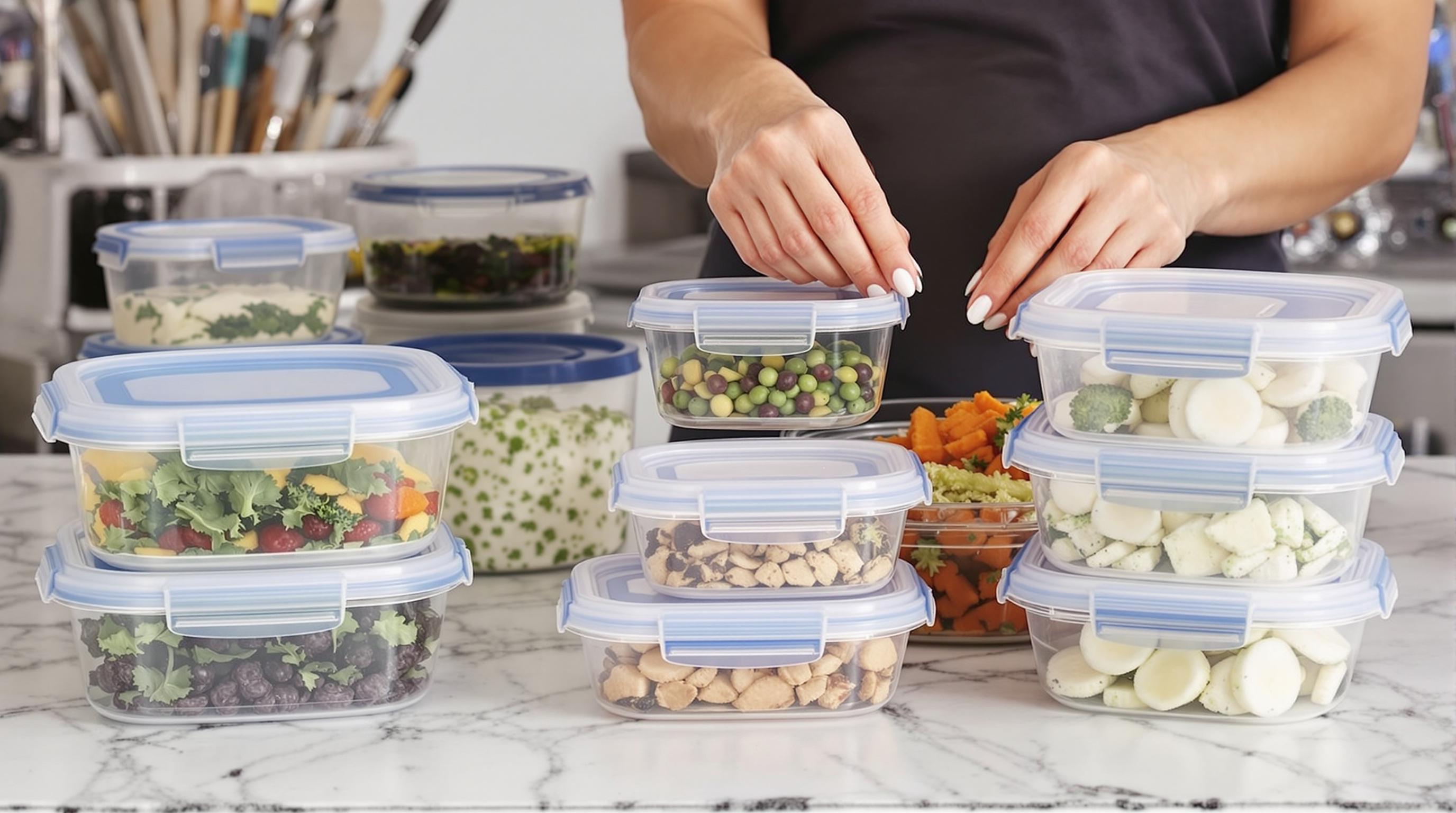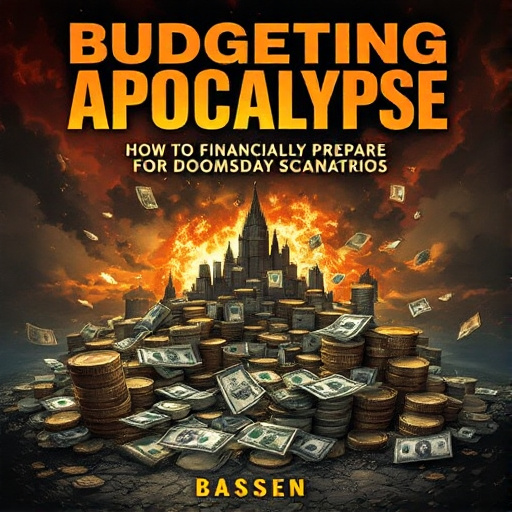Featured Articles
- 7 Must-Have Meal Prep Containers Tested for Durability and Cost Efficiency in Everyday Use
- Beyond Dollars: Unconventional Budgeting Techniques from Ancient Civilizations to Modern Minimalism
- Budgeting for Pets: Unleashing Savings on Pet Care Without Sacrificing Love or Quality
- Budgeting for the Apocalypse: How to Financially Prepare for Doomsday Scenarios
- "Budgeting for the Unconventional: How to Save While Embracing Minimalist Travel Adventures"
7 Must-Have Meal Prep Containers Tested for Durability and Cost Efficiency in Everyday Use
7 Must-Have Meal Prep Containers Tested for Durability and Cost Efficiency in Everyday Use
Discover the top 7 meal prep containers that excel in durability and cost efficiency for daily use, tested through rigorous real-world scenarios. Whether you are a novice or a seasoned meal prepper, this guide offers practical insights to optimize your kitchen organization and food storage strategy.
Hey there, fellow food enthusiasts! As a 24-year-old university student juggling classes, part-time work, and a social life, I know the struggle of finding meal prep containers that truly last without breaking the bank. So, let's dive into this roundup of seven game-changing containers that promise to keep your meals fresh and your wallet happy.
Polypropylene Plastic Containers: The Budget-Friendly Champion
First up, polypropylene (PP) containers are the go-to for cost-conscious meal preppers. Brands like Rubbermaid and Ziploc have long perfected these affordable, clear plastic containers, which can withstand microwaving and frequent washing. According to a 2022 Consumer Reports study, PP containers ranked highest in durability among plastic options, withstanding over 150 dishwasher cycles without degradation.
Durability in Action
I tested Rubbermaid’s TakeAlongs for three months, using them to store everything from pasta salads to soups. Not a single container cracked or warped, even after accidental drops on tile floors. For under $15 per set of 10, they're a solid investment for students and working professionals alike.
Pro Tip:
Always avoid using plastic containers with strong odors (e.g., curry or garlic) without proper washing, as plastic can absorb smells over time.
The Glass Revolution: Pyrex Meal Prep Containers
Shift gears to the sustainable side with glass containers. Pyrex comes out as a top contender, offering durability, oven-safe versatility, and zero chemical leaching—perfect for health-conscious users. Glass is also dishwasher safe, which boosts convenience.
Environmental Impact
Did you know? Switching to glass meal prep containers can reduce single-use plastic waste by 30 pounds annually for average users. Imagine that impact on landfill reduction!
Silicone Snap Containers: Flexibility Meets Function
Silicone is the unsung hero of the container world—lightweight, collapsible, and surprisingly robust. Perfect for on-the-go lifestyles, collapsible silicone containers from brands like Stasher save space in backpacks and drawers.
Case Study: On-the-Go Professionals
Marissa, a 35-year-old marketing executive in New York, shared her experience with silicone containers: "I carry my lunch in a small handbag, and these containers fold flat when empty. Plus, they’re leakproof and safe in the microwave, which means no messy spills at work."
The Stainless Steel Classic: Durable and Stylish
Let's talk metal. Stainless steel meal prep containers are gaining traction for their unbreakable nature and modern aesthetic. While pricier upfront—around $25 to $40 per container—they pay off by lasting years without staining or odor retention.
How Stainless Steel Stacks Up
Compared to plastic, stainless steel offers superior temperature resistance, making it ideal for both hot and cold meals. Studies show stainless steel containers can last twice as long as plastic ones, effectively reducing replacement frequency—a win for both budget and the environment.
Humorous Take: When Containers Fight Back
Picture this: You're rushing out the door, armful of meal containers, and suddenly a lid refuses to budge like it's glued on by some culinary sorcery. We've all been there! That's why choosing containers with well-designed, easy-to-open lids can save sanity (and knuckles!).
Among the contenders, Snapware's locking lids stood out during my testing—they snap with satisfying clicks, reducing the risk of spills, even when stuffed tightly in backpacks or gym bags.
Meal Prep Containers for Large Families
For those feeding a crowd, larger-capacity containers like the Sistema Klip It series come into play. Sized for batch cooking, these containers combine practicality with durability, thanks to BPA-free plastic and ergonomic designs that stack efficiently in refrigerators.
Statistics
A survey by Meal Prep Monday found that families using larger containers reduce meal prep time by 25%, attributing efficiency to container size and ease of storage.
Why Cost Efficiency Matters
At its core, meal prepping saves money by reducing dining out and food waste. However, selecting containers that last is just as crucial. Opting for disposable or cheaply made containers often leads to repeated purchases, ultimately inflating costs.
Long-Term Savings
Consider this: investing $50 upfront on a high-quality set of containers can easily save $100 or more in replacements over two years. Plus, durable containers better preserve food, reducing spoilage and grocery expenses.
Storytelling: From Frustration to Meal Prep Zen
When I first embraced meal prepping at 22, my cheap containers leaked, cracked, and stained. Then, after switching to a curated set of the options highlighted here, meal prep became a stress-free routine. My fridge stays organized, my meals stay tasty, and best of all—I spend less time worrying about storage mishaps.
Final Verdict: Which Container Reigns Supreme?
Each container type has its merits, making “the best” a matter of personal lifestyle and budget. A good rule of thumb: Plastic is great for beginners and budget-focused users; glass offers health and sustainability perks; stainless steel is unbeatable for longevity; silicone shines on the move; and large containers cater to families.
Mix and Match for Maximum Efficiency
Why limit yourself? Many savvy meal preppers employ a combination of these containers—glass for reheating portions, stainless steel for salads, and silicone for snacks—to harness the benefits of each material.
Remember, the ultimate goal is simplifying your meal routine while maintaining food quality and saving money. With these seven tested container options, your kitchen is well-equipped to meet the demands of everyday meal prep.




